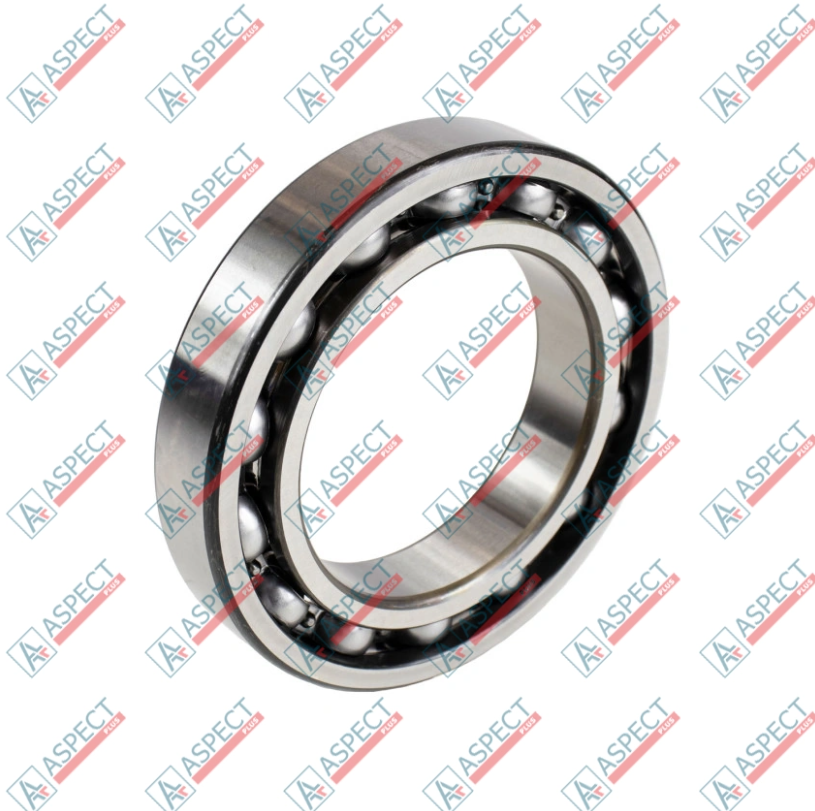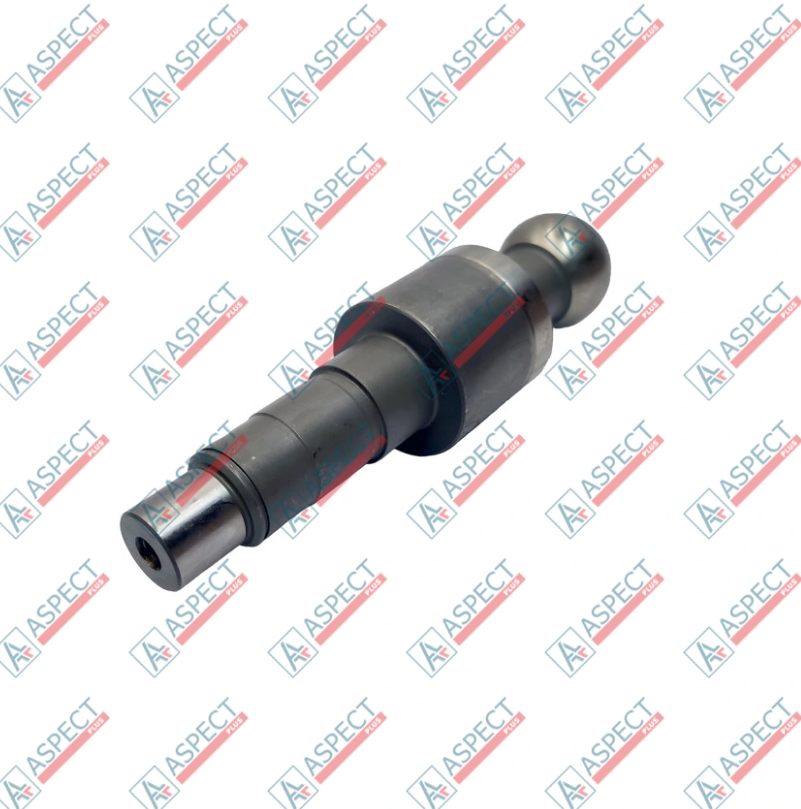Hitachi excavators, particularly those utilizing the HPV102 and HPV118 series hydraulic pumps, are renowned for their powerful, fast, and responsive performance. This high-level efficiency is not simply a matter of a strong engine or a large pump; it is the result of a highly sophisticated control system. The "brain" of this system is the main pump regulator. This complex component is responsible for perfectly balancing hydraulic flow (speed) and pressure (power) to match the operator’s commands and the engine's available horsepower.
When a Hitachi excavator begins to feel "lazy," "weak," or stalls the engine during heavy digging, the operator often assumes the main pump's rotating group has failed. However, this expensive component is often fine. The true culprit is frequently a malfunction within the regulator itself. Misdiagnosing this problem can lead to a costly and unnecessary replacement of the entire pump. This article provides an expert guide to diagnosing the main pump regulator on Hitachi HPV102 and HPV118 series pumps.
The Function of the Hitachi Pump Regulator
The pump regulator is a hydraulic-mechanical computer bolted to the pump. Its sole job is to control the angle of the pump's swashplate. The swashplate angle determines the piston stroke, which dictates the pump's displacement (how much oil it moves per rotation).
The regulator performs a constant, high-speed balancing act based on two main inputs:
-
Pilot Pressure (Operator Demand): When the operator moves a joystick, it sends a pilot signal, telling the regulator to increase the swashplate angle (up-stroke) for more flow and faster movement.
-
Pump Pressure (Engine Load): The regulator constantly senses its own output pressure. As the excavator digs into hard ground, pressure spikes.
The regulator’s "torque control" or "power management" logic then kicks in: it automatically "de-strokes" the pump (reduces the angle) to decrease flow. This allows the system to maintain maximum digging pressure without exceeding the engine's available horsepower and causing it to stall.
Common Symptoms of a Faulty Regulator
A failed regulator breaks this delicate balance, resulting in symptoms often mistaken for a failed engine or a destroyed rotating group.
-
Symptom 1: Severe Engine Bogging or Stalling This is the most common symptom of a regulator failure. The operator tries to perform a heavy function (like digging or lifting) and the engine chokes, loses RPM, and stalls. Cause: The regulator is failing to de-stroke the pump. It is stuck at a high-flow angle, demanding 100% flow and 100% pressure simultaneously. This requires more horsepower than the engine can provide, causing it to stall.
-
Symptom 2: Machine is Weak and Slow (All Functions) This is the opposite problem. The machine feels "lazy" and has no power, even though the engine sounds fine and is not under load. Cause: The regulator is stuck in the minimum-flow (standby or "de-stroked") position. It is not sensing the operator's pilot signal and is failing to increase the swashplate angle to produce flow.
-
Symptom 3: Erratic or Unstable Operation The hydraulic functions may seem jerky, or the pump may "hunt" (oscillate) between high and low flow. Cause: This usually points to sticking spools or contamination within the regulator. The internal spools cannot move smoothly, causing them to send erratic signals to the swashplate.
Root Causes of Regulator Failure
Regulators are precision instruments with extremely tight tolerances. They fail for predictable reasons.
-
Contamination (The #1 Cause): The regulator is a multi-stage valve block with tiny internal spools and orifices. A single microscopic particle of metal (from wear elsewhere) or dirt (from the hydraulic fluid) can jam a spool, block a signal orifice, or score the spool’s surface. This is the most common cause of all regulator problems.
-
Worn Spools and Bores: After thousands of hours, the spools inside the regulator wear down. As they wear, high-pressure fluid leaks past them. This internal leakage means the pilot signals are no longer strong enough to move the spools correctly, leading to a slow or non-existent response.
-
Broken Springs or Incorrect Adjustment: The regulator uses a complex set of balanced springs. A spring can fatigue and break, throwing the entire power curve out of calibration. More often, an untrained technician attempts to "fix" a slow pump by turning the regulator's adjustment screws without proper gauges, leading to severe engine lugging or power loss.
A Systematic Diagnostic Approach
Before condemning the entire pump, a logical diagnostic process must be followed to isolate the regulator.
-
Step 1: Check the Basics. Before blaming the pump, verify that the engine is achieving its full rated RPM. Then, check the pilot pressure from the joysticks. If the pilot pressure is weak, the regulator will never receive the signal to up-stroke.
-
Step 2: The Stall Test (Pressure and Load Diagnostics). This is the key test. Attach high-pressure (600 BAR) gauges to the main outlet ports of the HPV102/HPV118 pump.
-
Test 1: Standby Pressure. With the engine running and controls neutral, the pressure should be low and stable (e.g., 30-40 BAR).
-
Test 2: Main Relief Pressure. Stall a hydraulic function (e.g., hold the bucket curl). The pressure should rise to the machine's specification (e.g., 350 BAR) and hold steady.
-
Test 3: The Power Curve Test. While stalled at maximum pressure, listen to the engine. A healthy regulator will have de-stroked the pump to reduce flow, and the engine should be able to hold the load without stalling. If the engine chokes, emits black smoke, and stalls, the regulator has failed to de-stroke the pump.
-
-
Step 3: Analyze the "Load Sensing" (LS) Signal. The regulator works by reading the difference between the main pump pressure and the highest load-sensing (LS) pressure from the control valve. A fault in this LS line (e.g., a leaking port relief valve) can "trick" the regulator into thinking the load is always high, causing it to de-stroke and making the machine slow.
Repair Methods: A Task for Specialists
Repairing a Hitachi regulator is a high-precision job. It is not a simple "seal kit" replacement.
-
Disassembly in a Clean Environment: The regulator must be removed from the pump and disassembled in an immaculately clean, dust-free environment to prevent contamination.
-
Inspection and Lapping: All internal spools and bores must be meticulously cleaned and inspected for scoring or wear. Minor scoring can sometimes be polished (lapped) to restore a smooth, sealing surface. Worn or seized spools must be replaced.
-
Component Replacement: Replace all O-rings, seals, and any fatigued springs with a high-quality regulator repair kit.
-
Re-Installation and Bench Testing: The only reliable repair involves re-installing the rebuilt regulator onto the pump and calibrating the entire assembly on a hydraulic test bench. This is the only way to verify and adjust the standby pressure, cut-off pressure, and the crucial power curve. Adjusting the regulator screws "by feel" on the machine is a guess, not a professional repair.
Our company, Aspect Plus, supplies the genuine-spec, high-quality regulator repair kits and individual components (like spools and springs) necessary for a professional Hitachi HPV102/HPV118 rebuild, ensuring the repair restores the pump to its original performance standards.
Conclusion

Power loss, slow response, or engine stalling on a Hitachi excavator are often incorrectly blamed on the entire pump. In many cases, the true culprit is a failed or contaminated main pump regulator. This component is the brain of the pump, and its failure to balance flow and pressure is the root cause of the performance issue. Through systematic diagnostics, a technician can isolate the regulator as the cause. A successful, long-term repair requires meticulous cleaning, the use of high-quality replacement parts, and, most importantly, final calibration on a hydraulic test bench to restore the pump's designed power curve.
For expert consultation on hydraulic diagnostics and a reliable source for high-quality Hitachi regulator repair kits, contact the specialists at Aspect Plus.


